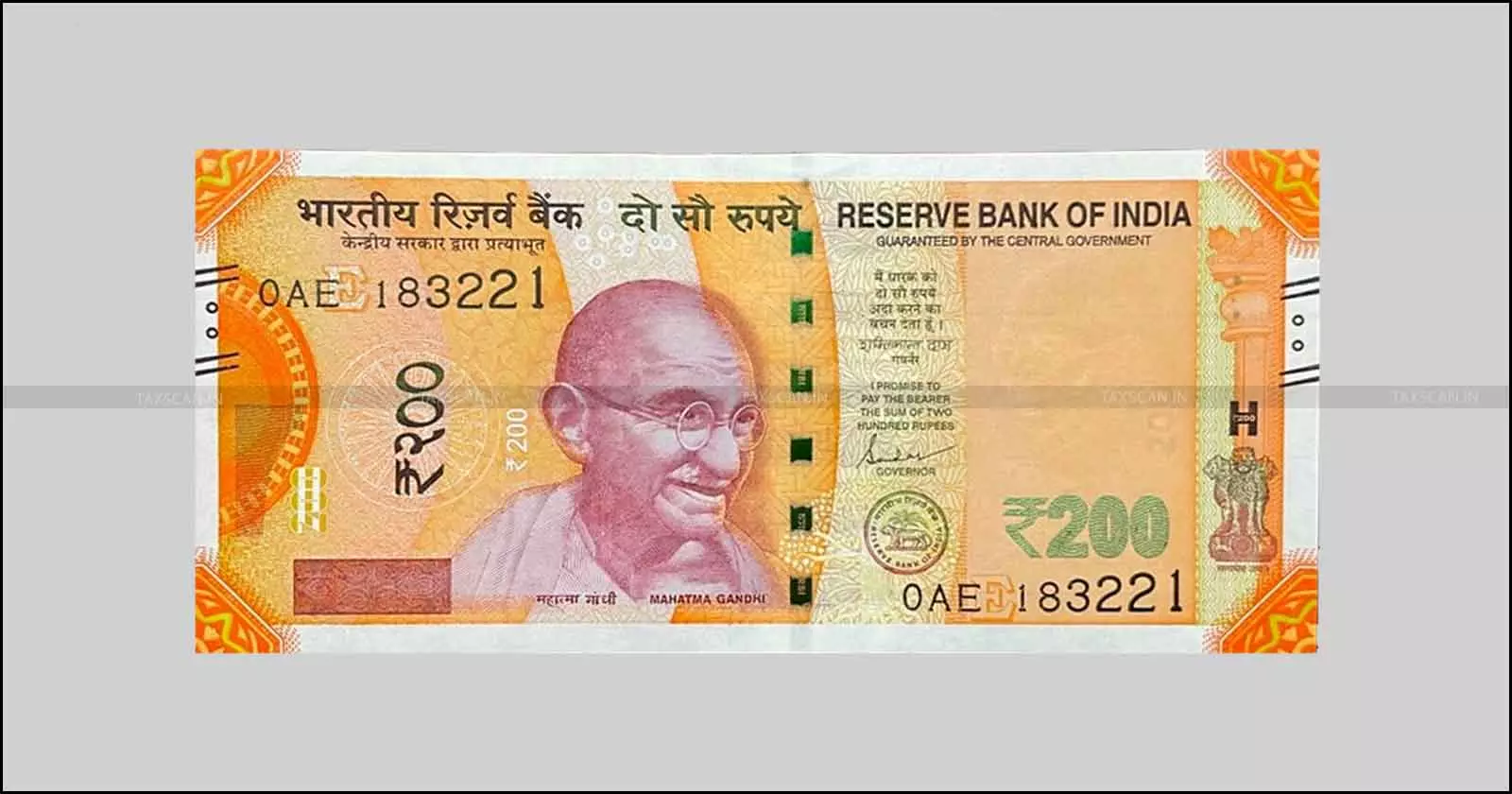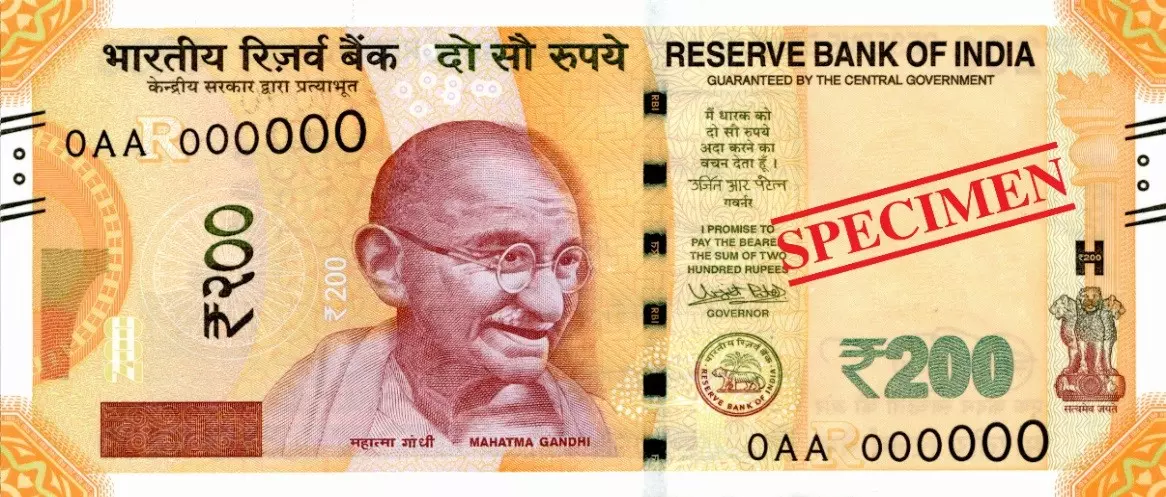Know Your Currency: In-Depth Look at the Rs.200 Bank Note
The RBI introduced the ₹200 banknote to ease cash transactions especially for everyday purchases between the ₹100 and ₹500 ranges

India’s ₹200 banknote, a relatively newer denomination in the country’s currency family, has steadily become integral to everyday transactions since its introduction in 2017. This bright yellow note fills a crucial gap between the ₹100 and ₹500 notes, easing cash circulation and catering to diverse spending needs. Beyond its monetary value, the ₹200 note is a fascinating blend of cultural symbolism, advanced security features, and thoughtful design, reflecting both India’s heritage and modern currency technology. In this detailed overview, we explore the origins, design elements, security features, and linguistic diversity embedded in the ₹200 banknote, offering you a comprehensive understanding of one of India’s vibrant currency notes.
Origins and Introduction
The ₹200 denomination is a relatively recent addition to the Indian currency series, introduced amidst efforts to streamline and stabilize currency circulation after the 2016 demonetization of ₹500 and ₹1,000 notes. Announced by the Reserve Bank of India (RBI) in March 2017, the ₹200 note was intended to be the "missing link" in the currency system. It fits into the RBI’s adoption of the Renard series — a principle guiding denominations to use steps of 1, 2, and 5 for optimal distribution and ease of transactions. The ₹200 note bridges the large value gap, helping people transact easily without stocking excess lower denominations or breaking high-value notes like ₹500.
Officially released into circulation on August 25, 2017, coinciding with Ganesh Chaturthi, the RBI’s new ₹200 banknote belongs to the MahatmaGandhi (New) Series. It features the signature of the then RBI Governor Dr. Urjit R. Patel and has been printed at government-approved presses in Mysore and Salboni. Since then, it has become widespread and commonly used, especially in retail markets and daily expenses.
Design and Symbolism
One of the standout features of the ₹200 note is its vibrant bright yellow base color which distinguishes it easily from other denominations. The dimensions are 146 millimeters in length and 66 millimeters in width, slightly larger than the ₹100 note but smaller than the ₹500 note, making it comfortable for handling.
Obverse (Front) Side: The front prominently displays the classic portrait of Mahatma Gandhi at the center—a tribute to India’s Father of the Nation. Adjacent to this are inscriptions in Hindi and English, including “Reserve Bank of India,” “Guaranteed by the Central Government,” and the promise clause affirming payment to the bearer. The Ashoka Pillar emblem is positioned towards the right near Gandhi’s image. The serial numbers appear on the bottom left and upper right corners with numbers gradually increasing in size for easy identification.

Reverse (Back) Side: The highlight of the reverse side is an exquisite image of the Sanchi Stupa, a UNESCO World Heritage site reflecting India’s rich cultural and historical heritage. The Sanchi Stupa is one of the oldest stone structures in India, symbolizing peace and heritage. Below the watermark area lie the iconic glasses of Gandhi.
Additional artistic elements include geometric patterns and the “Swachh Bharat” logo with the slogan “Ek Kadam Swachhata Ki Aur” (“A Step Towards Cleanliness”), highlighting India’s commitment to cleanliness and modernization.

Languages and Inclusivity
The ₹200 note maintains the tradition of linguistic inclusivity found in Indian currency. Its denomination is printed in 17 different languages, reflecting the country’s pluralistic ethos:
On the obverse, the value is stated in Hindi and English.
On the reverse, a language panel lists the denomination in 15 other official languages of India in alphabetical order: Assamese, Bengali, Gujarati, Kannada, Kashmiri, Konkani, Malayalam, Marathi, Nepali, Odia, Punjabi, Sanskrit, Tamil, Telugu, and Urdu.
This multilingual feature ensures accessibility and recognition across the diverse linguistic landscape of India.
Advanced Security Features
Security is a critical aspect of the ₹200 note to prevent counterfeiting and ensure authenticity. The RBI has incorporated a host of sophisticated features, some visible to the naked eye and others detectable only through specific examination:
- See-through Register: When held up to light, a small floral design printed on the front and back aligns perfectly to reveal the denominational numeral “200.”
- Latent Image: A latent numeral “200” becomes visible when the note is tilted at an angle.
- Electrotype Watermark: The watermark of Mahatma Gandhi’s portrait appears along with the electrotype numeral “200” near the watermark window.
- Windowed Security Thread: A green to blue color-shifting security thread featuring alternating inscriptions of “भारत” (Bharat) and “RBI” runs vertically on the note’s front.
- Color-Changing Ink: The numeral “200” printed on the bottom right changes color from green to blue when tilted.
- Micro-lettering: The note carries tiny inscriptions of “RBI” and “भारत” near Gandhi’s image.
- Intaglio Printing (Raised Print): Raised printing is employed for the portrait of Gandhi, Ashoka Pillar emblem, and identification marks to assist visually impaired users.
- Angular Bleed Lines: There are four distinct angular bleed lines at the edges along with two circles between the lines on both sides to aid tactile identification.
- Number Panel: The serial numbers grow from small to large font on both top left and bottom right, aiding quick verification.
Together, these features create a currency note that is secure and factory-standard compliant in the global context.
Usage and Circulation
The RBI introduced the ₹200 banknote to ease cash transactions especially for everyday purchases between the ₹100 and ₹500 ranges. Its bright color, moderate size, and distinct design have made it increasingly popular in retail markets, public transport, and informal sectors where high denominations can be inconvenient.
It also eases change-giving situations and reduces cash stockpiling of smaller notes, optimizing currency circulation and handling in banks, ATMs, and businesses.
Conclusion
The ₹200 banknote stands as a powerful symbol of India’s currency modernization efforts, successfully blending heritage, security, and functionality. It fills a vital space in the nation’s currency spectrum, making transactions smoother and more efficient. With its rich symbolism like the Sanchi Stupa, sophisticated security measures, and multilingual inclusivity, this note reflects not just economic utility but the cultural and linguistic diversity of India.
As Indian currency continues evolving with technology and citizen needs, the ₹200 note is a perfect example of how modern banknotes can serve practical purposes while celebrating the country’s unique identity.
Next time you receive a ₹200 note, take a moment to appreciate the layers of design and technology that make this humble currency note a remarkable piece of India’s financial and cultural fabric.
Support our journalism by subscribing to Taxscan premium. Follow us on Telegram for quick updates


